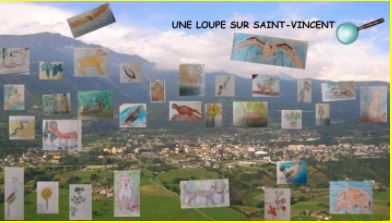Author: class III B, I.S. Abbé Trèves - St. Vincent, Valle d’Aosta (IT)
PARTNER: class III A, I.S. Abbé Trèves - St. Vincent, Valle d’Aosta (IT);
class V, IC Bosco Chiesanuova, Corbiolo, Verona (IT)
Learning Objectives
- Key competences for citizenship (EU) - cultural knowledge and expression: learning how to learn
- Civic education: acquiring information and developing a critical spirit on environmental education issues
- Civic education: knowing the main rules of behaviour and respect that protect the natural environment
- Science: understanding current scientific issues and adopting responsible behaviour
- Science: to know the flora and fauna of the area and how to behave to preserve it
- Langue : produire des textes multilingues de différents types en fonction de différents objectifs de communication
- Technology: to use the most common technologies by identifying potentially useful solutions in a given application context from the study activity; to know and use information and communication tools
- Technology: conoscere e utilizzare strumenti informatici e di comunicazione
- Technology: building a magic cube with images about the biodiversity of our territory
Process
To accomplish this task, the work will be divided into several phases:
1. Understand that a mini website is built with digital hardware
- locate where to find information
- learn how to select and save links
This phase will be conducted by teachers with the whole class using an integrated educational approach, it provides for the use of the interactive whiteboard and guided navigation and the selection of websites.
2. The class is divided into study groups that will refer to the resources and materials provided by their teachers
- GROUP A: seek information concerning the flora and fauna of the territory of Saint-Vincent
- GROUP B: research the behaviours that we must adopt to preserve biodiversity
This phase takes place in the computer room where each pupil will use the computer for guided navigation on within the websites provided by the teachers. Each student will bring to the group the information they have found.
3. Learn how to realise a web minisite
This phase is conducted by the teachers with the whole class using an integrated educational approach, through the view of a tutorial and the use of the interactive whiteboard.
4. Creation of the mini website
Group work: coordinated by their teachers, the groups will participate in the design and implementation of multimedia according to the assigned tasks.
The mini website must included of the following parts:
- a cover with the title of the activity and the class it concerns
- a menu of topics covered
- the themes:
- the flora and fauna of the territory of Saint-Vincent
- the protection of the ecosystem, i.e. the behaviour that we must exhibit in order to preserve biodiversity.
5. Building of the Magic Cube: “The Nature Box”. Individual Work
Evaluation
- Getting to know the territory's biodiversity
- Knowing the virtuous behaviours to preserve biodiversity
- Ability to search for information on selected websites
- Use of the information found
- Use of the most common technologies
- Making an object by explaining the process steps
- Cultural skills
- Social skills
The evaluation of the work completed is based on:
- Teachers' observation of the students during the different steps
- Compilation of assessment headings on the development of cultural and social skills
- Final assessment questionnaire
Conclusion
When we present the work to our friends, we will reflect on the activity and how it went.
Here are some questions:
- Do you think that this activity has increased your scientific knowledge?
- Will you look at nature in a different way?
- Do you think that what you have learned can be used in other contexts?
Links
Région Autonome Vallée d'Aoste / Regione Autonoma Valle d'Aosta
https://www.regione.vda.it/default_i.asp
Municipality of Saint-Vincent
https://www.comune.saint-vincent.ao.it/it/aree-tematiche/territorio/flora-e-fauna









